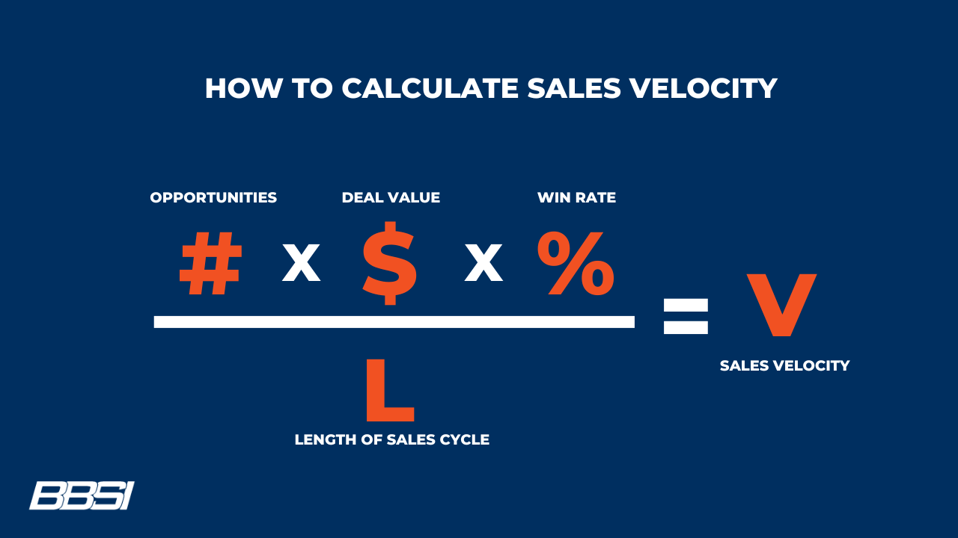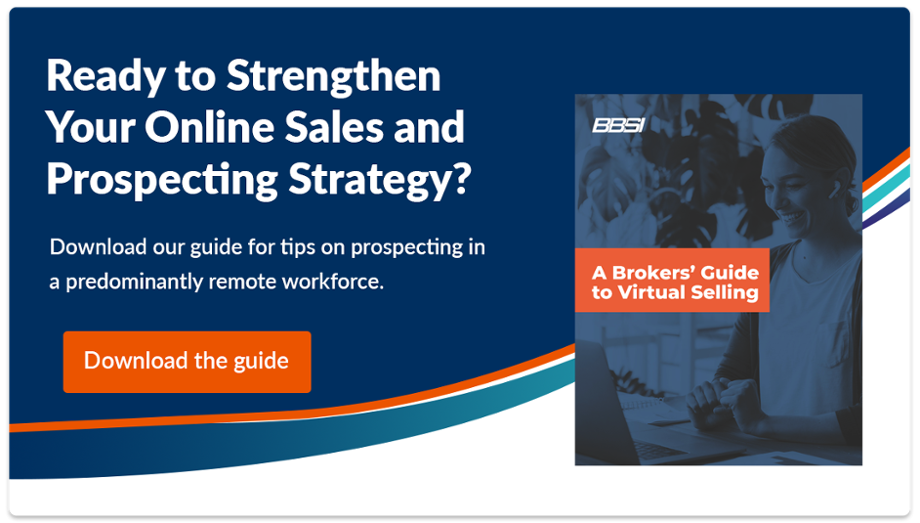How to Fill and Manage Your Lead Pipeline

The journey from lead to customer is crucial for any business, especially for those in the competitive insurance industry. Conversions are never guaranteed, so business stability and growth depend on keeping your pipeline filled and managed properly.
Below, we’ll explore omnichannel lead generation strategies, pipeline marketing techniques, and technologies like customer relationship management (CRM) platforms you can adopt to build a full, flowing lead pipeline.
But first…
What Is a Lead Pipeline?
Put simply, a lead pipeline represents the way potential clients and customers move through the various stages of your sales process. Leads enter the pipeline at the time they show interest, and continue to flow through the pipeline until they become a client. Once in the pipeline, leads require nurturing and continual engagement to convert them into clients.
Lead pipelines vary depending on the business, but a typical pipeline flow is: Lead > Marketing Qualified Lead (MQL) > Sales Qualified Lead (SQL). In order for a lead to move from one stage to the next, they must meet certain criteria to qualify or disqualify them as a good sales opportunity.
Lead Pipeline Factors
Two key factors contribute to a healthy lead pipeline:
- Lead generation: Also known as “lead gen,” lead generation pushes leads into your pipeline funnel, and involves generating interest in your company and services from strangers or referrals. Leads generally come from marketing and website engagement (e.g., clicking on paid ads, downloading gated content, attending an event, etc.).
- Pipeline management: Also known as “lead nurturing,” pipeline management pushes people down the buyer’s journey path using different activities to qualify them, or push them out of the pipeline if they are not a match for your business.
As businesses increasingly analyze their lead pipelines, lead generation approaches are evolving. Previously, lead generation was exclusively a marketing responsibility. Now, strategies are shifting towards marketing and sales collaboration to improve lead quality and increase the likelihood of a sale.
How Are Quality Leads Generated?
Today, there are far more engagement channels than phone calls and physical mailers. With modern technology, marketing and lead generation activities now take place via numerous avenues.
Before jumping into these different lead-generation activities, it’s important to understand who your ideal customer is and what motivates them to invest in your services. To help you achieve this, build a buyer persona; a fictional representation of your ideal customer that breaks down their fears, challenges, research habits, goals, and more. Once you’ve nailed down who you’re talking to, you will have an easier time tailoring your lead generation tactics and messaging to their preferences.
Some lead generation activities and channels you can utilize to fill your pipeline include:
- Customer Referrals: Referrals from business partnerships and referral programs generate connections with no investment, aside from being a good partner. They also provide your sales team with an easier introduction.
- Networking: Networking and getting involved in your community is a great way to generate quality leads, usually for free. Connecting with other business owners introduces you to a wider group of people and shared target audiences, giving you more opportunities to find ideal leads and convert them into clients.
- Paid advertising: Targeted advertising, such as paid search engine results page (SERP) placement and social media advertising, can generate leads quickly. Online paid advertising is more effective when you leverage specific keywords that potential leads are actively searching for.
- Content marketing: Data reveals potential customers will interact with 10 to 12 pieces of content from a company before purchasing, and every piece published is an opportunity to demonstrate authority and thought-leadership. Content also provides an opportunity to preemptively counter objections and educate potential clients to make closing easier for your sales team.
- Social media presence: Your overall social media presence increases awareness of your brand and allows you to connect with current and potential customers directly. Generate content that displays your culture and caters to your buyer personas, and utilize social media channels specific to your ideal client. For younger buyers, consider Instagram or Facebook, and for business owners or white-collar professionals, consider LinkedIn. Establishing a presence on a variety of social media platforms is an easy way to facilitate brand awareness on a wide scale.
Reliance on one lead generation channel alone is risky. Instead, combine engagement methods in an “omnichannel strategy” where you spread your messaging across various channels. One channel may bring awareness, while another might convert your leads.

Tips for Nurturing Leads and Managing Your Pipeline
Because the primary goal of marketing and sales is to gain more customers, not just leads, you should engage your contacts throughout their pipeline journey until they become a client. Lead nurturing is the process of creating stronger relationships with buyers using marketing efforts catered to their needs at every stage of the pipeline.
When your intention is to close new business rather than build awareness, many strategies that work for lead generation can be repurposed for pipeline marketing.
Let’s dive into six tips for nurturing your leads down the pipeline.
1. Invest in a Customer Relationship Management (CRM) Platform
Broadly, customer relationship management (CRM) refers to a set of methods and technologies businesses use to manage and analyze customer interactions. The ultimate goal is to streamline processes, increase sales, and build trust with customers who will champion your brand. In previous eras, this was simply the mark of an expert account manager or salesperson. Today, CRM platforms help organize and automate the sales process to help you recover bandwidth without sacrificing relationship quality.
With a CRM platform, everyone has the tools to elevate their sales pipeline and account management processes. The system you implement should help schedule activities, keep you notified of important events, and track each prospect through their pipeline journey. You’ll be able to build and/or monitor:
- Outreach and nurturing, identifying new opportunities through data analytics
- Workflow automation to organize and execute follow-up activities
- Prospects’ current pipeline stage
- Incoming referrals
Without implementing a CRM platform, you’re doing more manual work to advance fewer leads through the pipeline.
2. Utilize Marketing Automation
Generating leads can require significant business resources, but leveraging the right technology platforms streamlines and simplifies the process. Automating your lead generation and pipeline marketing campaigns with scheduled engagements and activities will enable you to “set and forget” much of the work.
For example, full email campaigns can be built and executed from a platform, tracking data like open rates and click-through rates (CTR). Technology platforms will even allow you to compare varying messages (i.e., A/B testing) or configure adaptations that automatically determine which message prospects will receive next.
3. Maintain Key Metrics
CRM platforms and other technologies make tracking and analysis significantly easier, but collecting metrics is necessary to optimize pipeline engagements. Important metrics to track include:
- Percentage of qualified leads
- Cost per lead
- Click-through rate
- Monthly opportunities opened and closed
- Customer acquisition costs
Tracking these metrics allows you to identify the effectiveness of your marketing efforts and channels. You can optimize and personalize your engagements, and spend your money and time where it matters most.
4. Determine Pipeline Length With Sales Velocity
If you don’t know how long it takes for a potential client to journey from SQL to close, you won’t know how long your pipeline marketing campaigns should last, or what reasonable growth goals look like.

You can track “sales velocity” by multiplying the number of opportunities by the average deal size and win rate, and then dividing that number by the average sales cycle length. Accelerating sales velocity will demonstrate pipeline marketing effectiveness, while slowdowns provide early warning signs that something needs fixing.
5. Build a Referral Network or Program
Building a referral network with other businesses and service providers will immediately increase your SQLs. Ninety percent of people trust word-of-mouth recommendations, and referrals operate similarly. When a business someone trusts connects them with a partner who offers a service they need, they’re more likely to initiate engagement and join the pipeline as a “hot” lead.
6. Develop Marketing Content for Prospect-Initiated Engagement
As mentioned above, people are increasingly researching their purchases before committing. You want to provide enough content they can engage with to demonstrate your industry expertise, quality services, and helpfulness. However, prospects at different stages of the lead pipeline may be looking for different content.
Establishing a “full-funnel” and omnichannel approach ensures potential clients can easily access all the content they’re looking for across:
- Sales enablement (e.g., resources for sales staff to share directly)
- Blog articles
- Case studies
- Gated content and similar lead-generating offers
- Videos
- Email newsletters
- Social media posts
Providing a variety of content helps guide leads through the pipeline and ensures they’re more prepared for a sales conversation, so your sales team can spend less time educating them on the basics before conversion.
Bolster Your Pipeline With BBSI
Filling and managing a lead pipeline is an example of “art meeting science.” Every company will benefit from different strategies based on their engagement channels, activities, and client demographics. Whichever strategic mix you choose, the most important thing to communicate while collecting and nurturing leads is the value you can provide.
When you partner with BBSI, you expand both your professional network and your service offering, as well as the support you can provide to prospective clients. To learn how BBSI can help you differentiate yourself in the market, check out our Referral Partner Program today.
Disclaimer: The contents of this white-paper/blog have been prepared for educational and information purposes only. Reference to any specific product, service, or company does not constitute or imply its endorsement, recommendation, or favoring by BBSI. This white-paper/blog may include links to external websites which are owned and operated by third parties with no affiliation to BBSI. BBSI does not endorse the content or operators of any linked websites, and does not guarantee the accuracy of information on external websites, nor is it responsible for reliance on such information. The content of this white-paper/blog does not provide legal advice or legal opinions on any specific matters. Transmission of this information is not intended to create, and receipt does not constitute, a lawyer-client relationship between BBSI, the author(s), or the publishers and you. You should not act or refrain from acting on any legal matter based on the content without seeking professional counsel.
